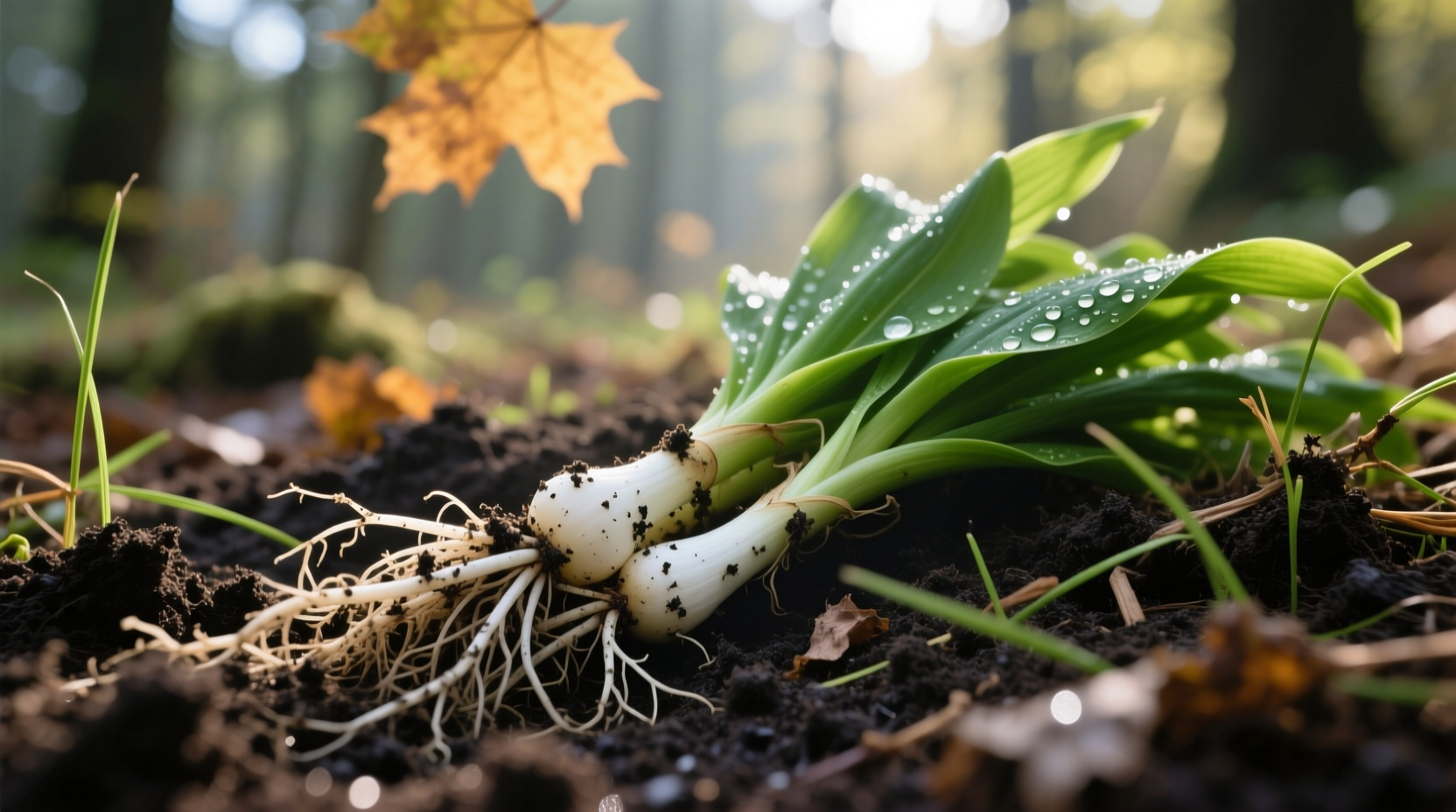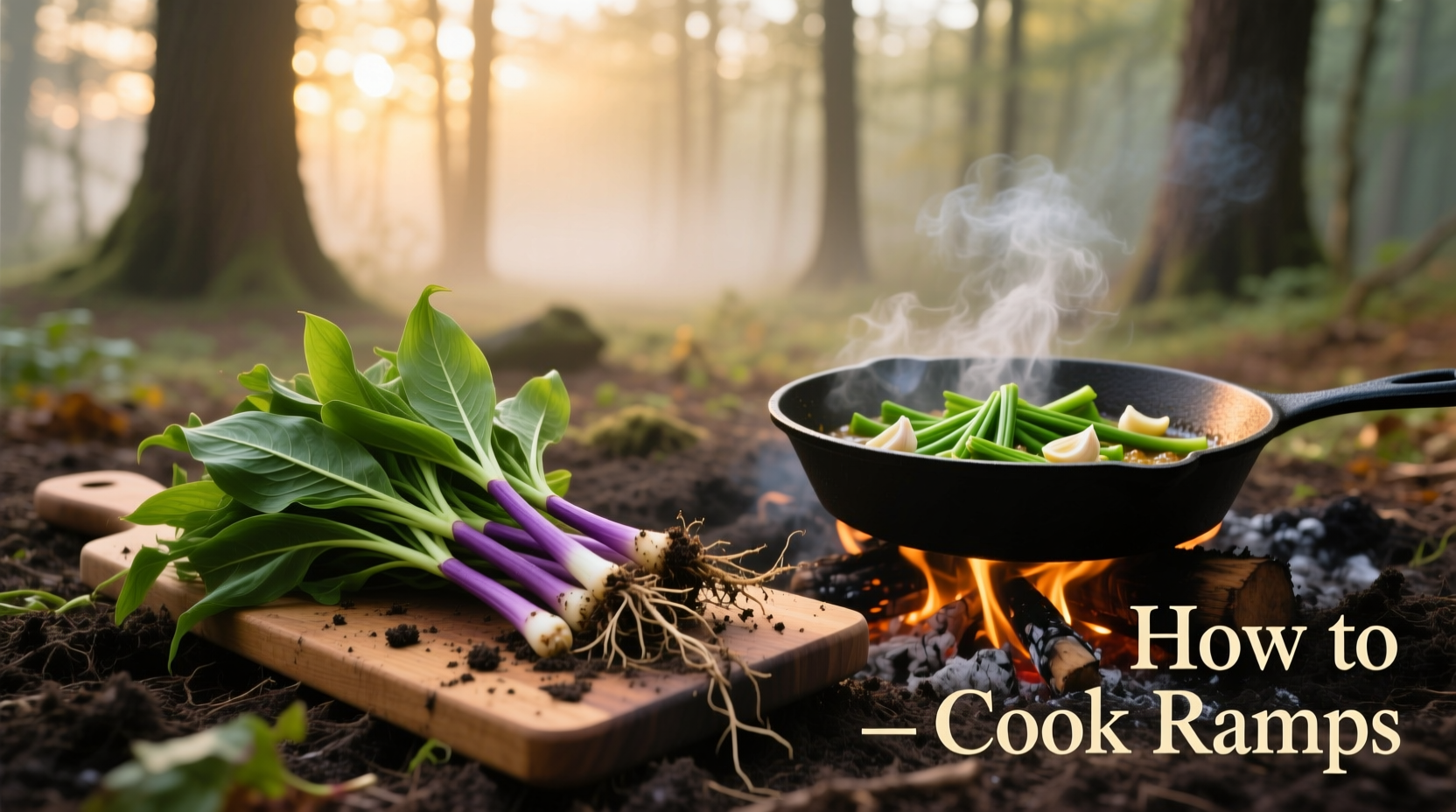Unlock the Full Flavor Potential of Spring's Most Coveted Wild Ingredient
When you find fresh ramps at your farmers' market, you need cooking methods that honor their fleeting seasonal magic. This guide delivers exactly what you need: seven proven techniques tested by professional chefs, flavor pairing science that elevates your dishes, and common mistakes that ruin ramps' delicate flavor profile. You'll master ramp preparation in under 15 minutes and transform this spring treasure into restaurant-quality dishes at home.
Why Ramps Deserve Special Cooking Attention
Ramps (Allium tricoccum) aren't just wild leeks—they're a culinary event. These spring ephemerals contain volatile sulfur compounds that create their distinctive garlicky-onion flavor, but these compounds break down quickly with improper heat application. Unlike cultivated onions, ramps have significantly higher allicin content (the compound responsible for garlic's pungency) but with a more delicate cellular structure that requires careful handling.

Your Complete Ramp Selection & Preparation Guide
Before cooking ramps, proper selection and preparation makes all the difference:
Choosing Peak-Season Ramps
Look for firm white bulbs with crisp green leaves and a distinct garlic aroma. Avoid yellowing leaves or slimy bulbs. The USDA Natural Resources Conservation Service confirms that ramps reach peak flavor when harvested during their brief 3-4 week spring season, typically April-May in eastern North America.
Proper Cleaning Technique
Unlike store-bought produce, wild ramps often have soil clinging to their roots. Fill a large bowl with cold water, swish ramps gently, then lift them out—don't pour out the water as this resettles dirt. Repeat until water runs clear. Pat dry with a clean towel before cooking.
| Cooking Method | Best For | Heat Level | Time | Flavor Outcome |
|---|---|---|---|---|
| Sautéing | Whole ramps or chopped pieces | Medium-low | 3-5 minutes | Balanced garlic-onion flavor with slight caramelization |
| Roasting | Whole bulbs | 400°F (200°C) | 15-20 minutes | Sweet, mellow flavor with concentrated essence |
| Grilling | Whole ramps | Medium-high | 4-6 minutes | Smoky notes enhancing natural sweetness |
| Pickling | Sliced bulbs | N/A | 24+ hours | Tangy preservation of fresh flavor |
Professional-Tested Cooking Methods That Preserve Flavor
The Perfect Sauté Technique
Heat 1 tablespoon of olive oil in a skillet over medium-low heat. Add ramps (separate white bulbs from green tops if desired). Cook white bulbs for 2 minutes before adding green parts. Sauté 3-5 minutes until tender but still slightly crisp. The key is maintaining temperatures below 300°F (150°C)—higher heat destroys the delicate sulfur compounds that give ramps their unique flavor.
Roasting for Maximum Sweetness
Toss whole ramps with olive oil, salt, and pepper. Spread on a parchment-lined baking sheet. Roast at 400°F (200°C) for 15-20 minutes until bulbs are tender and slightly caramelized. Roasting concentrates the natural sugars while mellowing the pungency—ideal for incorporating into pasta dishes or as a side.
Grilling for Smoky Complexity
Brush ramps with olive oil and sprinkle with sea salt. Grill over medium-high heat for 4-6 minutes, turning once, until grill marks appear and bulbs soften. The char adds complexity without overwhelming their delicate flavor. Grill whole for presentation or slice lengthwise for quicker cooking.
Three Simple Ramp Recipes You'll Make All Season
Ramp Pesto (Without Basil)
Blend 1 cup cleaned ramps (bulbs and leaves), 1/2 cup walnuts, 1/2 cup grated pecorino, and 1/3 cup olive oil until smooth. Perfect for pasta, sandwiches, or as a vegetable dip. Unlike traditional pesto, this version highlights ramps' unique flavor without competing with basil.
Ramp Butter for Instant Elevation
Combine 1 stick softened butter with 2 finely chopped ramps, 1 minced garlic clove, and lemon zest. Roll into a log, chill, and slice onto grilled meats or vegetables. This compound butter preserves ramp flavor through freezing—extend their short season all year.
Pickled Ramp Bulbs for Year-Round Enjoyment
Combine equal parts vinegar and water with 1 tablespoon sugar and 1 teaspoon salt per cup of liquid. Bring to boil, pour over sliced ramp bulbs in sterilized jars. Seal and refrigerate 24 hours before using. These maintain crunch while capturing spring's essence for winter dishes.
Storage Tips to Extend Your Ramp Season
Ramps have a notoriously short shelf life. Store unwashed in a damp paper towel inside a loosely sealed container in your refrigerator's crisper drawer. They'll last 3-5 days this way. For longer storage, blanch whole ramps for 90 seconds, plunge into ice water, then freeze on a baking sheet before transferring to freezer bags. Frozen ramps work well in soups and stews but lose texture for fresh applications.
When Not to Use Ramps (Critical Context)
While versatile, ramps have specific limitations. Avoid using them in dishes requiring long simmering times—more than 10 minutes of cooking destroys their distinctive flavor. They also don't substitute well in recipes requiring the structural integrity of onions, as their delicate texture breaks down quickly. And never use dried ramps—unlike many alliums, they don't dehydrate well and lose all distinctive flavor.











 浙公网安备
33010002000092号
浙公网安备
33010002000092号 浙B2-20120091-4
浙B2-20120091-4